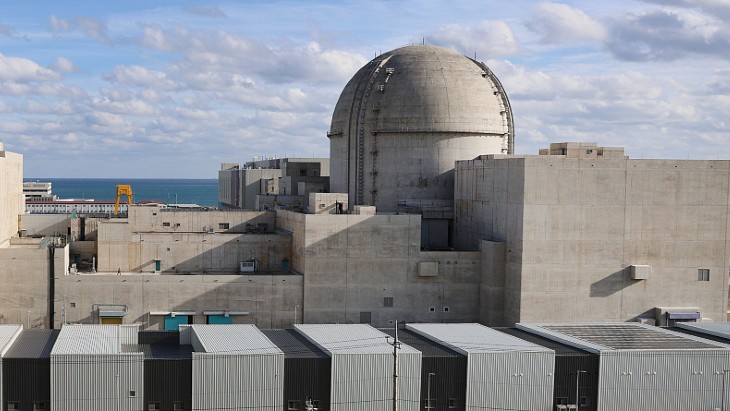"Last July, Bruce Power announced a CAD3 billion (USD2.4 billion) 'Made in Ontario' plan to invest in Ontario jobs and economic prosperity through our Life-Extension Program, medical isotope development, and asset optimisation strategy," Bruce Power President and CEO Mike Rencheck said. "By investing in an Ontario-based supply chain, Bruce Power is supporting economic growth locally and helping to bring homegrown technology to the forefront of worldwide nuclear innovation."
Ontario Minister of Economic Development, Job Creation and Trade Victor Fedeli said the province's nuclear industry, including Bruce Power and its supply chain, is a key partner in the government's Build Ontario plan to drive economic recovery and prosperity across the province. These contracts mean good jobs for highly-skilled workers and economic activity for communities across the province," he said.
Cameco Fuel Manufacturing (CFM) is producing all the calandria tubes and annulus spacers for the six units that are to undergo MCR under a CAD62 million contract announced in 2017. It has now completed manufacturing the calandria tubes for the MCR of Bruce 3, which is due to begin next year. This is the second set of calandria tubes for the Bruce MCR project: CFM delivered a full reactor set of 480 tubes ahead of the MCR at Bruce 6, which began in January 2020.
Meanwhile, Bruce Power said it has "solidified" a CAD30 million contract with ATS Automation to automate the installation and inspection of calandria tubes for the unit 3 MCR, which it says is an industry 'first' for a CANDU nuclear refurbishment. Cambridge, Ontario-based ATS has already designed, tested and manufactured the automation systems used to support the safe removal of pressure tubes, calandria tubes and other components.
Steam generators
A contract for the replacement of steam generators at Bruce units 3 and 4 - eight at each unit - has been awarded to the Steam Generator Replacement Team (SGRT), which is a joint venture of Aecon and Framatome-United Engineers & Constructors partnership SGT. SGRT is also responsible for replacing the steam generators at Bruce 6, the last of which was lifted into place in December.
"We are incredibly proud of the progress that was made to safely advance Bruce Power's unit 6 MCR project in 2021," Aecon Group President and CEO Jean-Louis Servranckx said on behalf of SGRT. "With SGRT also being awarded a contract extension for units 3 and 4 this year, we look forward to working with Bruce Power to continue executing in 2022 - ensuring the long-term future of the Bruce Nuclear Generating Station, continued job creation, and the supply of clean, reliable, low-cost energy for Ontarians."
The MCR project is part of Bruce's Life-Extension Program, a long-term investment programme to update all eight Bruce reactors and secure the site's operation until 2064. Units 3-8 will all undergo MCR, which includes the replacement of key reactor components such as steam generators, pressure tubes, calandria tubes and feeder tubes. Unit 6 is the first to undergo the process, and is expected to return to service in 2024. Work is scheduled to begin on unit 3 in 2023 followed by unit 4 in 2025, and each refurbishment is expected to be shorter in duration and ultimately more cost effective than the preceding one. All the MCRs are scheduled to be completed in July 2033 and will add some 30 years of operational life for each CANDU reactor.
Bruce units 1 and 2 have already been refurbished. Those units - along with units 3 and 4 - were placed in long-term shutdown during the 1990s but underwent refurbishment before returning to commercial operation in 2012. Ontario succeeded in phasing out all of its coal-fired generation in 2014.





_72306.jpg)


_49562.jpg)





